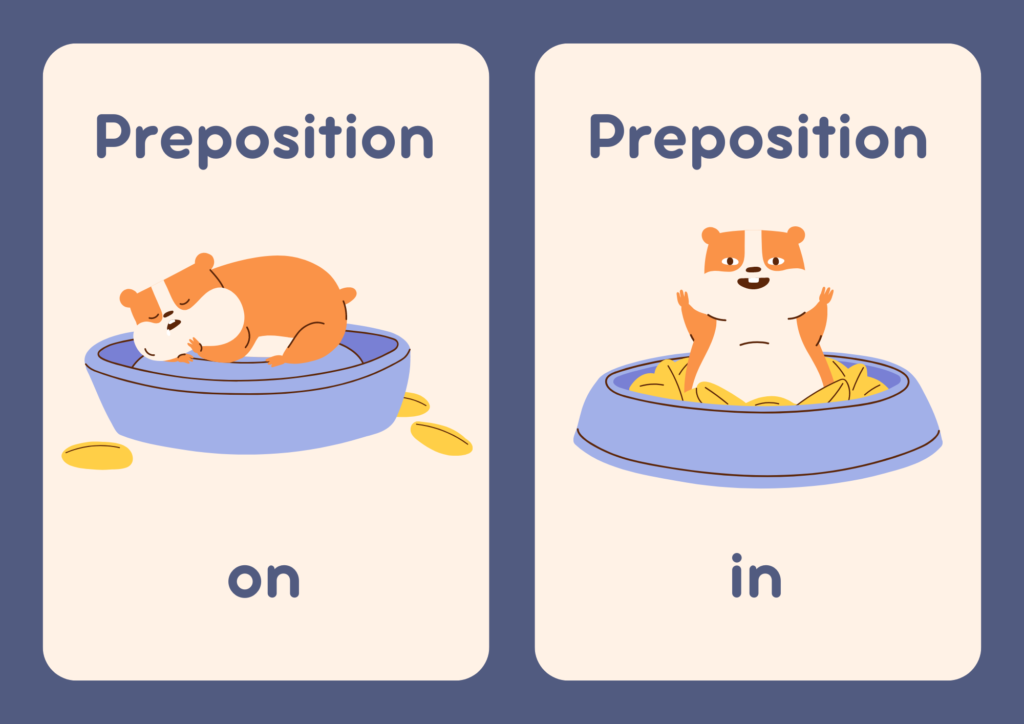Spatial concepts, also known as spatial relationships, refer to understanding where objects or people are located in relation to one another. These include prepositions and words that describe position, direction, distance, and location, such as in, on, under, behind, next to, between, and in front of. Mastering spatial concepts is a critical step in a child’s speech and language development, as they play a fundamental role in helping children organize their thoughts, follow instructions, and describe events or objects clearly.
Key Spatial Concepts
Some common spatial concepts include:
Location: in, on, under, behind, in front of, between
Position: first, last, middle, top, bottom
Direction: up, down, over, across, through
Distance: near, far, close
How to teach Spatial concepts
1. Begin with Real-Life Instructions
The foundation of teaching spatial concepts lies in giving simple, real-life instructions that children can follow without the pressure of speaking. For example, instruct the child:
Teaching spatial concepts such as “on,” “under,” “in,” and “beside” can take time, especially verbally. These concepts are best learned through real-life experiences rather than abstract images or pictures at the start. The key is to engage children in meaningful, hands-on activities where they naturally encounter these concepts. Here’s a step-by-step guide to teaching spatial concepts effectively:
“Put your water bottle on the table.”
In this activity, the emphasis is on the word “on the table.” At first, the child may not verbally respond but will understand the concept through the action of placing the bottle. Repeating this instruction regularly helps solidify the meaning of “on” in the child’s mind.
2. Create Routine and Repetition to teach spatial concepts
Use the same instruction every day. For instance, as soon as children enter your space or room, you could say, this is an example as I do this in my therapy sessions
“Put your bottle on the table.”
This repetition allows the children to anticipate and follow the instruction automatically. Over time, they begin to associate the spatial term “on” with the action of placing something on the table. The key is consistency—use the same wording without switching between terms early on to reinforce the learning process.
3. Introduce Language Naturally
Over time, as the child gains confidence, they will likely start to verbalize the instruction without prompting. For example, they may say, “bottle on table” when performing the task. This is a crucial milestone because the child is learning the meaning of the concept through their actions. The language follows naturally once the concept is understood.
Learn this also if your child is repeating everything heard-Is my child a Gestalt Language Processor?
Stop and Read- How to teach speaking in sentences
Read- How Story telling can help children in expressing themselves
4. Expand to Other Activities: spatial concepts
Once the child is familiar with one spatial term (e.g., “on”), introduce others in similar activities. You might say:
- “Put the toy under the chair.”
- “Place the ball in the box.”
- “Put the book beside the bed.” Use the same method: introduce one spatial concept at a time and incorporate it into daily, familiar activities.
5. Reinforce through Daily Home Activities:spatial concepts
There are countless ways to integrate spatial terms into daily life, which strengthens the learning process. Encourage parents or caregivers to use simple instructions during routine activities like:
- “Put the spoon on the table”
- “Place your shoes in the shoe rack.”
- “Take your toy from under the couch.” The more the child encounters these instructions in their daily life, the quicker they will grasp the concepts.
6. Avoid Starting with Pictures: spatial concepts
One of the most common mistakes is starting with picture cards or diagrams. These abstract representations can be confusing if the child hasn’t experienced the concept in real life. It’s important to build the foundation using real objects and actions first. Once the child has a firm grasp of the concept, you can then introduce pictures as a fun and engaging way to reinforce learning.
7. Incorporate Playful Activities to teach spatial concepts
After the child has a good understanding of spatial terms through real-life experiences, you can make learning even more engaging by using play. Introduce mats with different pictures and objects like clay balls, toy animals, or building blocks. Ask the child to perform tasks like:
- “Place the clay ball on the red mat.”
- “Put the dog beside the tree.” This introduces a visual and imaginative element while still reinforcing the spatial concepts they’ve already learned.
8. Gradually Build Vocabulary
As children master basic spatial terms, you can introduce more complex phrases or combine multiple spatial concepts. For example:
- “Put the cup on the table, and then place the spoon beside the cup.” Building up their vocabulary in this way ensures they’re learning in a layered, meaningful manner.
Key Takeaways for Parents and Therapists
- Start with real-life actions: Focus on meaningful, everyday tasks where the child can physically experience the concept.
- Use consistent instructions: Repetition of the same phrase helps the child solidify the meaning of spatial terms.
- Incorporate into daily routines: Encourage parents to reinforce spatial terms through simple instructions at home.
- Don’t rush verbal responses: Allow the child to process the actions before expecting them to verbalize the concept.
- Introduce pictures later: Only once the child is confident with the concept in real life should you introduce visual aids.
Teaching spatial concepts takes time, but through consistent, real-life instruction, children can grasp these essential terms meaningfully.
Author- Shabana Tariq Speech and Language Therapist
Contact for free consultations

